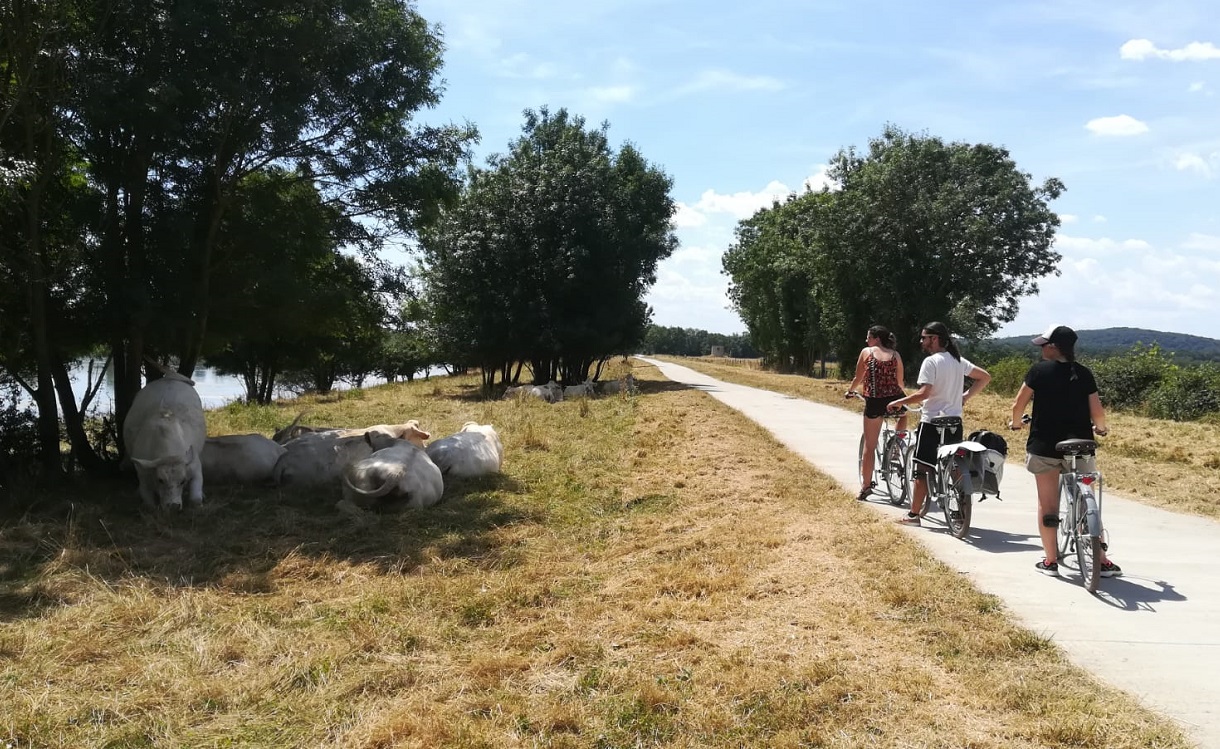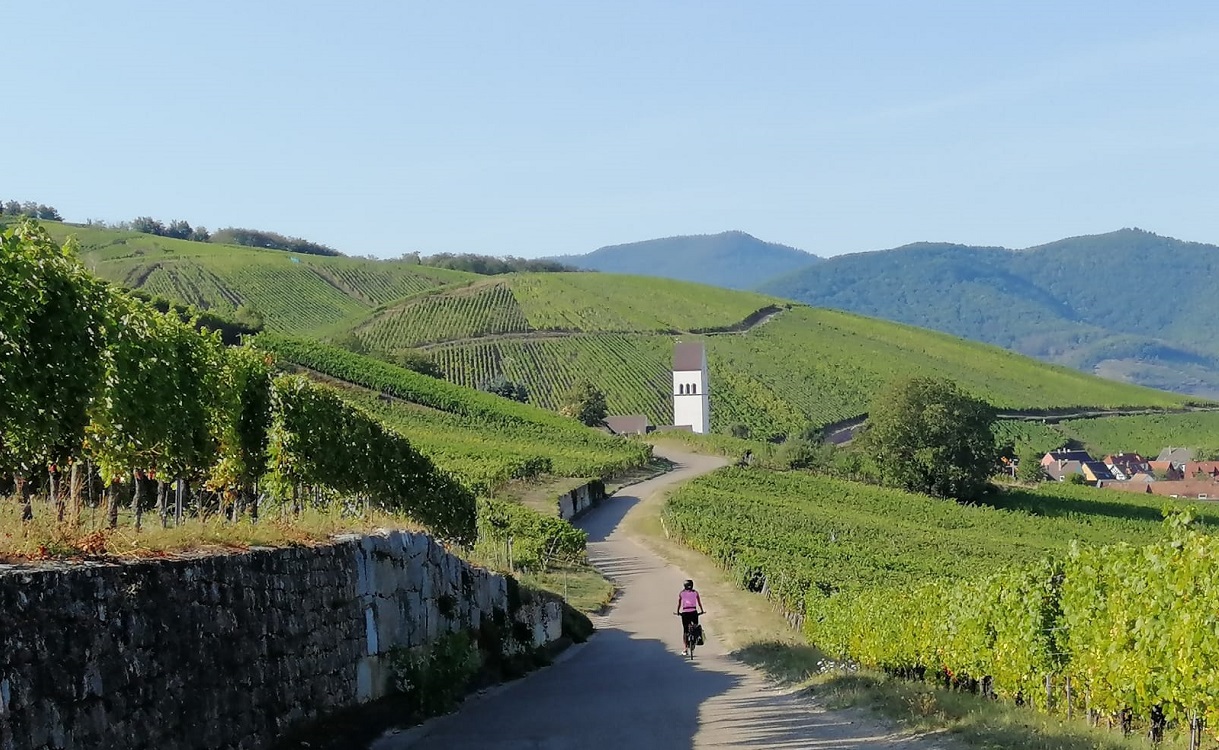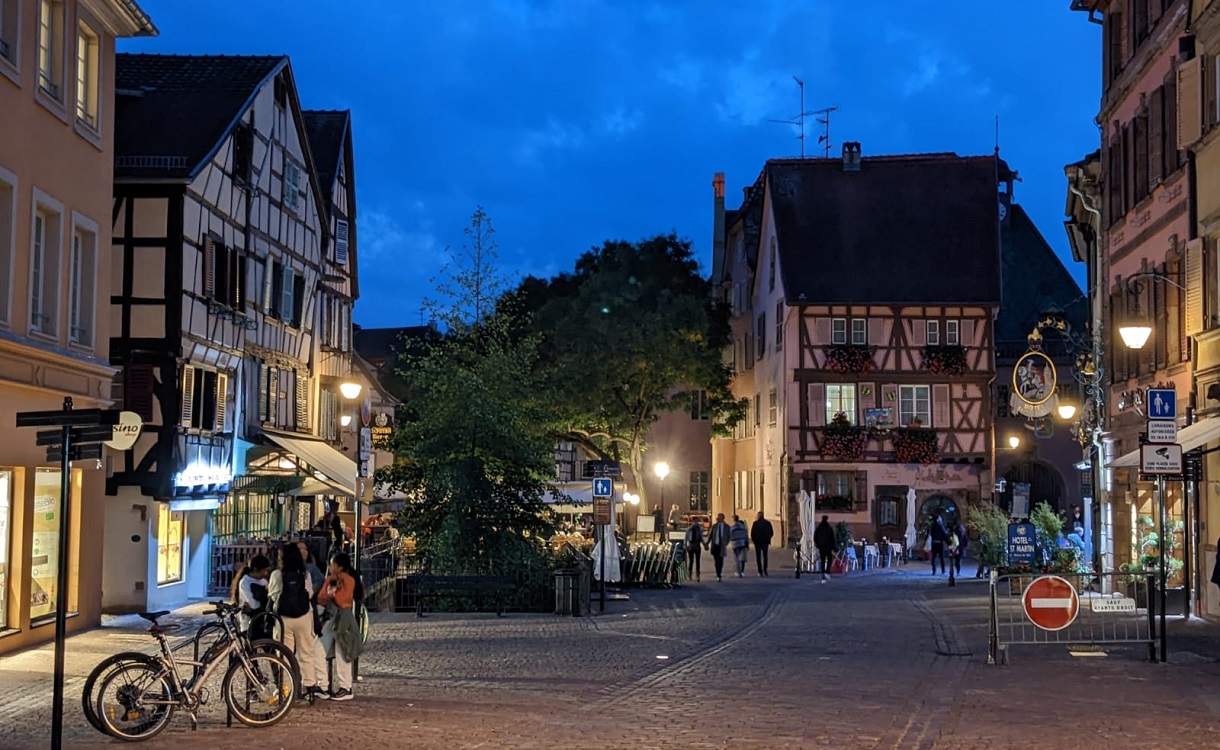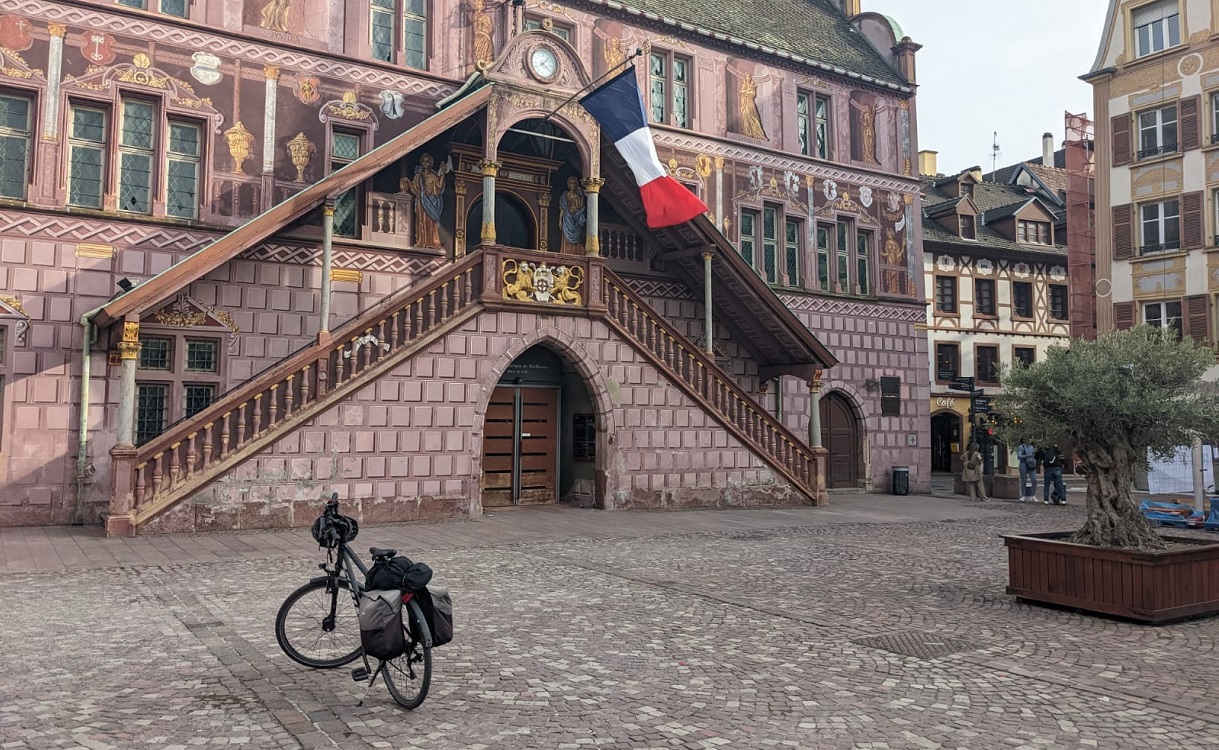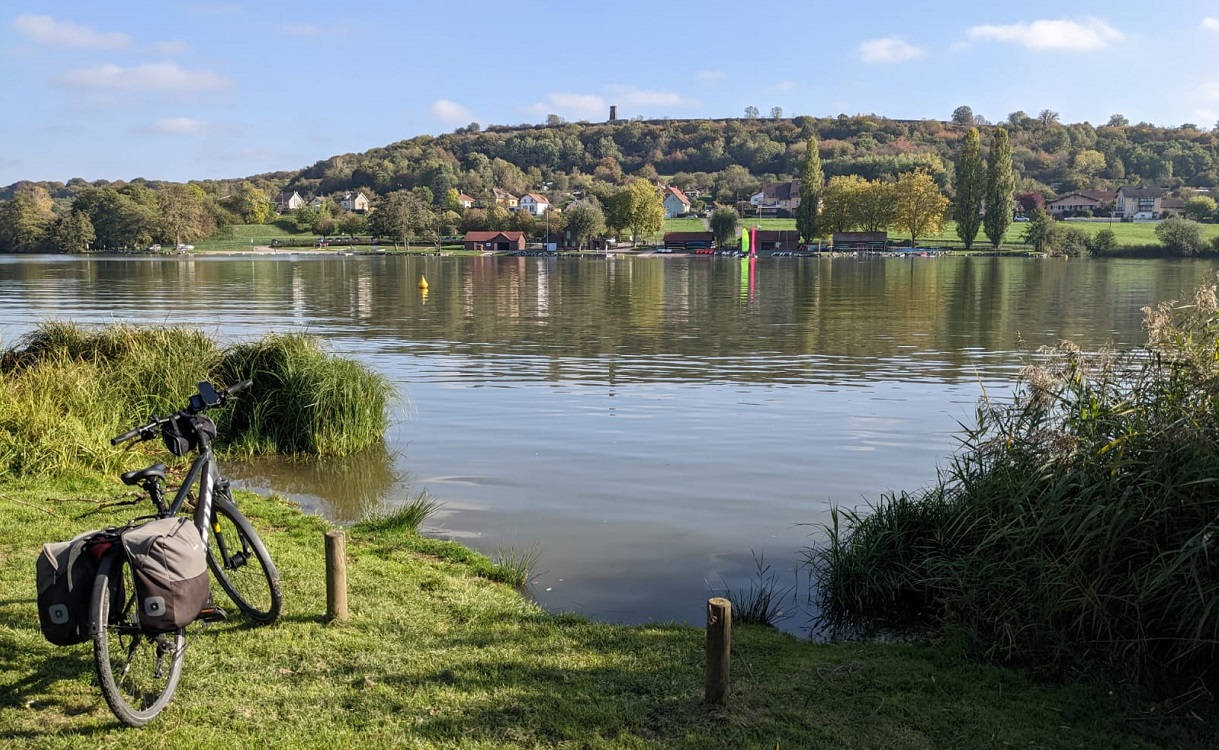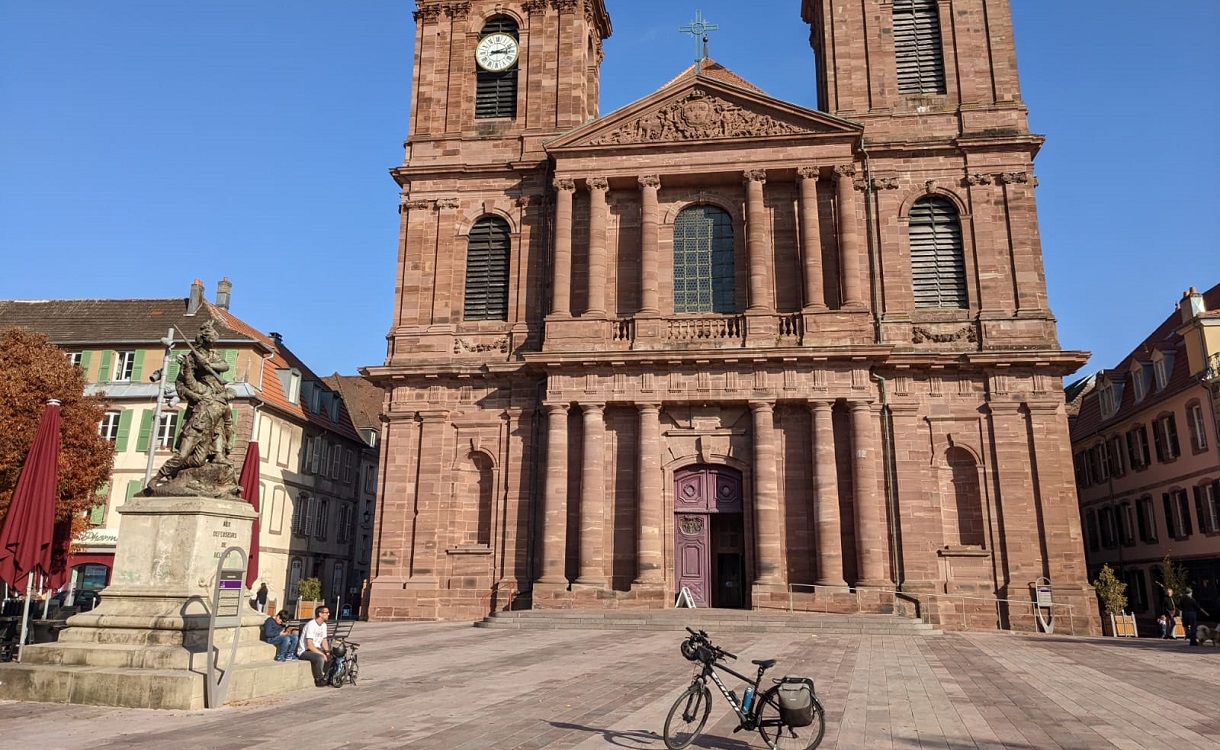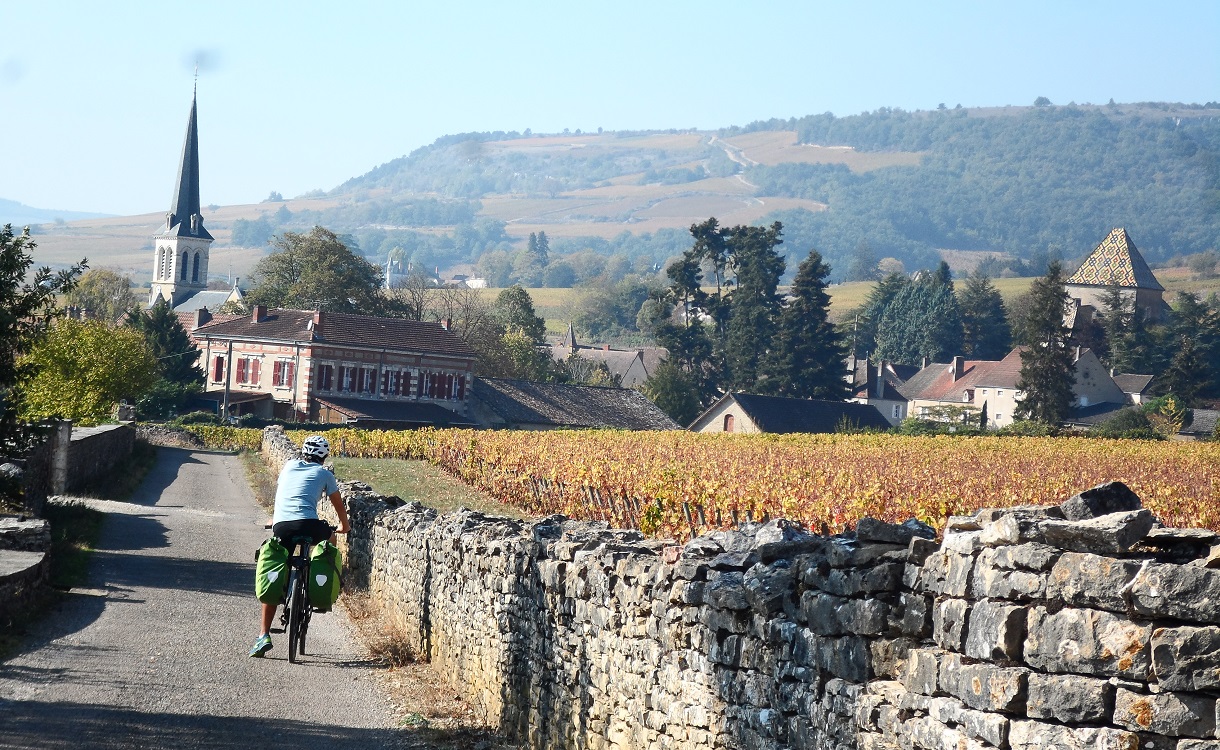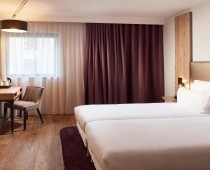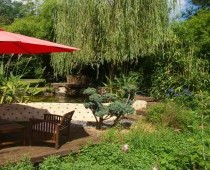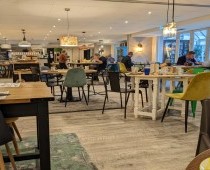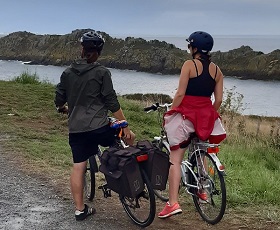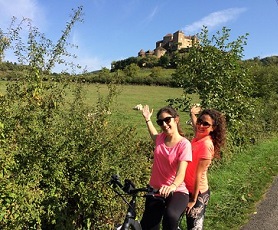Here we go! Take part in a multifaceted bike trip through the vineyards of both Alsace and Burgundy regions without forgetting to enjoy the bucolic exploration of the Doubs valley with its rural landscapes and its rich industrial heritage.
During your bike holidays, you will discover some architectural masterpieces such as the Royal Saltworks, the citadels of Belfort and Besançon or Bartholdi’s famous lion and you will be entertained by the numerous activities of the cities you cross. The museum of Time, the most prestigious collection of cars or Pasteur’s house are definitely worth visiting!
You ride on small roads through the vineyards and on a cycle path along the Doubs river which is perfectly adapted for cyclists. What better way to put your worries aside and enjoy every moment of your trip through three different regions of France?
Alsace

 GPS-app available
GPS-app available
Alsace and Burgundy wine roads by bike, passing by the Doubs
Grand cru from Alsace or from Burgundy, you do not know how to choose? Never mind, taste both of them, explore the bucolic landscapes of the Doubs valley and enjoy the authentic culinary specialities of this lively part of France!
Reference
AD1401

- Itinerant trip
- 14 days
- Easy
- from April to November
- Minimum age 14 years
 GPS-app available
GPS-app availableFrom
Prices
1740€ / pers.
- Itinerary
- Accommodation
- Bikes, luggage and documents
- a touring bike adjusted to your size
- equipped : front rack pack, saddlebag, helmet (on demand), reflective vest, repairing toolkit with patches etc.
- We transport your luggage from one accommodation to the next using a private vehicle.
- Your luggage is directly delivered in your accommodation before you arrive.
- We provide a saddlebag for the things you shall need during the day.
- a roadbook with maps that we drew at the easiest scale to follow on a bike
- a roadbook with step-by-step description giving the direction to follow at each intersection and highlighting the points of interest
-
- Practical information
- By plane: flight for Basel or Strasbourg and then shuttle to the city center.
- By train: Regional train or TGV to Colmar. From Paris: duration 2h20; from Strasbourg: duration 30min. To plan your trip: https://www.thetrainline.com/
- If you drive to Colmar, you can park your car in a secured car park located close to your hotel. The location and contact details of the car park will be given in your travel documents.
- Regional trains and TGV take you back to your starting point if you wish. The duration of the journey is around 1h45 with a direct train or with one connection. You have to buy your ticket on spot. There are several trains per day.
-
Download
the trip description

 |
 |
|||||||||||||||||||||||||||||||||||||||||||||||||||||||||||||||||||||||||||||||||||||||||||||||||||||||||||||||||||||||||||||||
|
||||||||||||||||||||||||||||||||||||||||||||||||||||||||||||||||||||||||||||||||||||||||||||||||||||||||||||||||||||||||||||||||
Category B
You’ll get a good night’s sleep staying in these 3-Star hotels or Bed and Breakfasts. All properties have been selected for their cleanliness, style and the friendliness of the staff. A hearty breakfast is included!
* Example of the type of accommodation
Bikes
On your arrival day, we provide you with:
We also provide you with the appropriate equipment for your children : baby seat, bike trailer or trailer bike depending on their age and size.
On your arrival day, we provide you with:
We also provide you with the appropriate equipment for your children : baby seat, bike trailer or trailer bike depending on their age and size.
Electric bikes are also available for adults (+1m55).
You can of course also bring your own bikes, in this case a reduction will be applied (see the Tarif tab)
Luggage
Our services include luggage transport in order to let you enjoy your trip comfortably and without stress :
Our word of advice : as we know from experience, we strongly recommend you to avoid wearing a backpack during your cycling trip.
If you expect to arrive at the next accommodation before 5 p.m., we recommend that you take an extra set of clothes with you in your bicycle bag.
Travel documents
A cycling holiday is the best way to explore a region and discover its culture, landscapes and local traditions.
Your tour is self-guided to give you the freedom to ride at your own pace. You will be provided all the information you need to enjoy the itinerary and its points of interests.
We can provide you with travel documents in paper format (for a supplement of €15 for printing and postage), which include:

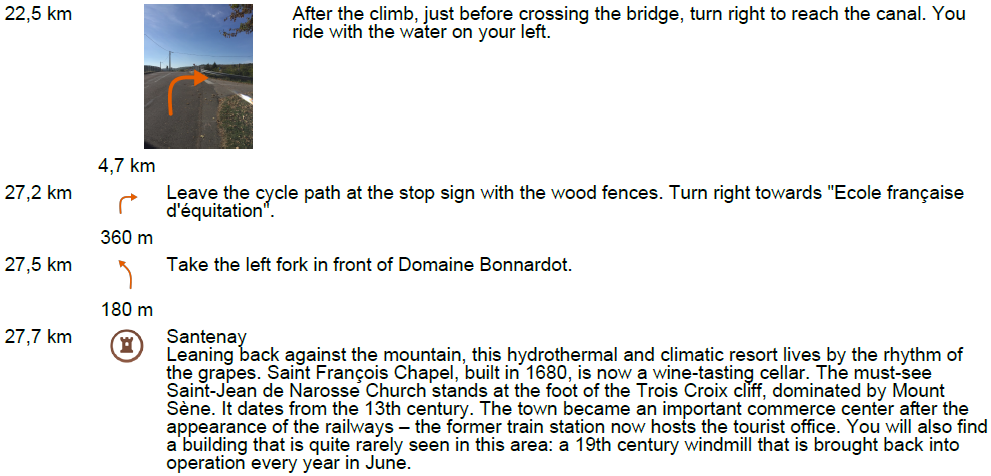
Example of a map and of a step-by-step description
Our GPS App
For this trip, you can also use our smartphone app featuring GPS guidance (without extra fee).
You will find in the app all the information given in the map and step-by-step roadbooks. You will be located on the itinerary with the GPS device of your phone. The route and directions to
follow will be both viewable on the screen of your phone and announced aloud. As you ride along the itinerary, you will be given information about visits, restaurants, services and
useful alerts on the way.
-> You need to have a smartphone and download Le Velo Voyageur app on your Apple or Android store before the trip. All details concerning the downloading and the use of the application will
be given after we have confirmed the booking and the balance is paid. Once the trip is downloaded, the GPS guidance can be used off-line.
To get to departure point:
Parking:
To reach back the starting point:
.



